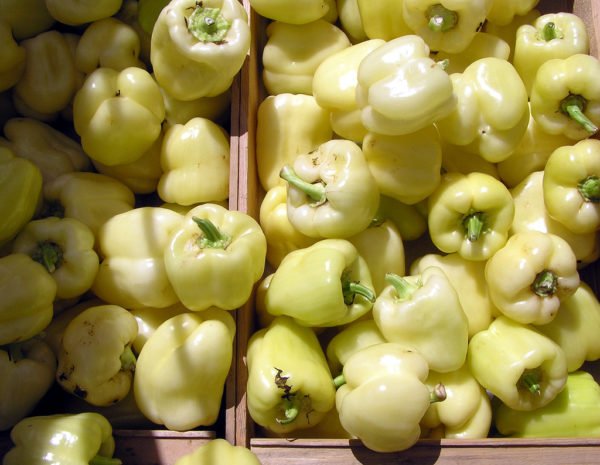
White pepper is not a separate variety, but a group of varietal hybrids and independent types of pepper. In the description of the variety, white color is not characteristic of pepper in a state of technical ripeness. In unripe form, it contains a large amount of vitamins and is suitable for consumption. Such varieties have a set of specific beneficial ingredients. Truly white, acquiring the color of ivory in a ripe state, can only be considered the Dutch hybrid White Bell.
White pepper in sweet varieties of bell pepper is a variety that is in great demand. Even in an unripe form, it is suitable for consumption and it contains a large amount of vitamins, minerals and nutrients. Seedling growing tips always mention this feature.
Content
Seedling Growing Tips
The main data on the varieties Lumin, White Bell, Century, Star of the East and others can be found among the yellow and red varieties. The lack of information leads to the fact that the authors of some articles confuse white varieties of bell pepper with white pepper, which is used as a spice and obtained from black pepper peas.
White pepper is not a variety, but different varieties, which at a certain stage acquire a white color. Experienced gardeners are advised to grow seedlings in separate pots to avoid picking. It should be fed before planting in the soil and at the level of 2-3 leaves. Hybrid seeds can not be processed and not soaked, collected independently it is better to process potassium permanganate in order to avoid infection.
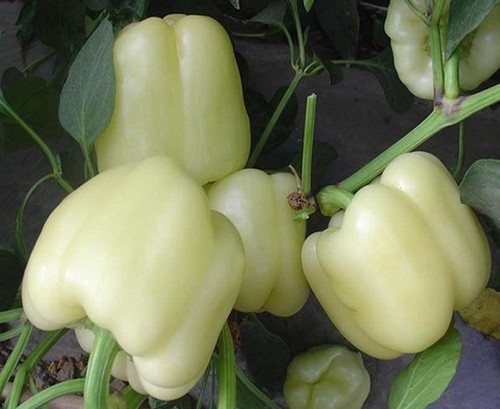
White Pepper: Variety Overview
Kalota F1
The favorite variety of those who are engaged in changing crops in the garden and growing in a small area abundant and varied crops of vegetables, taking into account the proper agricultural technology. Kalota belongs to one of the earliest varieties, and ripens in just 60 days from the moment of transplanting. This is a white pepper variety that people incompetent in gardening underestimate due to, in their opinion, not enough dominant color. Hybrid seeds from the originator do not need additional processing, because when packaged, they are treated with a fungicide for resistance to disease.
Skillful gardeners use this quality for the correct change of area and plant daikon radish after remote bushes, which still has time to ripen before the fall. After the radish the next year, you can again plant pepper in the same place.
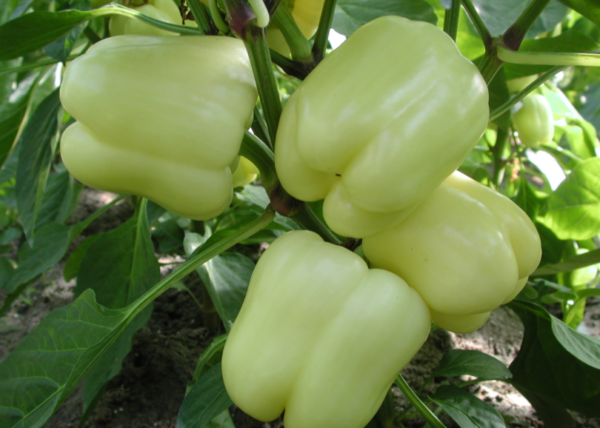
Snowwight
An early ripe hybrid with a whitish-yellowish fruit color, bred by Dutch breeders according to the type of Hungarian wax. According to gardeners, it is characterized by high productivity, gives abundant fruits, though not very large. They have a weight of 130-160 g, with a wall thickness of 4-5 mm, oblong, in length from 12 to 15 cm. Snowwhite becomes white for a short time, in a state of technical ripeness, and at this moment contains the largest set of nutrients. Therefore, in Europe it is rented and sold precisely during this period.
He has an excellent ability for long-term preservation of presentation, transportation. The variety has good keeping quality under optimal conditions. In a state of full ripeness, the fruits acquire a saturated orange color, and in certain regions it is harvested after reaching this color.
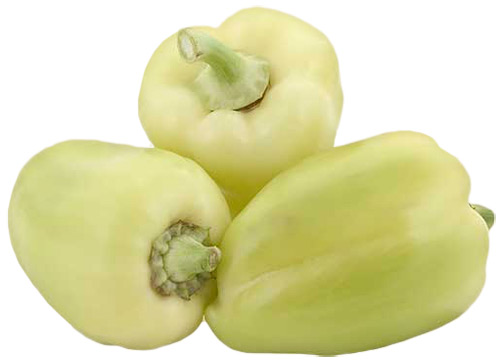
Star of the East is white
Any sort of Star of the East, regardless of the shade that he received from his breeders (and there are red, yellow, golden, purple, tangerine, giant and chocolate), is distinguished by excellent taste, juiciness and suitability for any culinary needs.
The White Star of the East, like everyone else, is a hybrid that was entered in the State Register of the Russian Federation in 2007 and recommended for growing in various types of greenhouses and in open ground.
Hybrids have several advantages:
- resistant to verticillous wilting and tobacco mosaic;
- early ripening;
- high-yielding and idler.
The White Star of the East gives 8-10 kg with proper agricultural technology. But she reaches this color only in a state of technical ripeness. By the way, White varieties are considered both White in red and White in yellow, which in full ripeness change their color to red and yellow.
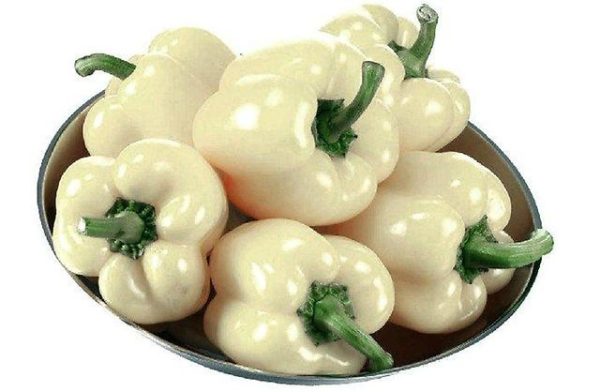
Belozerka (Lumina)
A standard medium-sized stem plant, which in the required state (in white color or technical ripeness) stays for 110–115 days, and in full ripeness acquires saturated red. It happens on about 135 days. Fruits in a state of technical ripeness are valued higher. Almost always, the crop is removed at this stage.
A super-early variety, bred by Moldovan breeders, of a characteristic golden white color, which many do not know by name, but one of the very first to be seen on the market's sales counters. A bush of medium height, fruits in the region of 100 g. A stable, reliable, medium-yielding and very unpretentious variety, which rarely fails its owner. Thin-walled fruits are not of the most original, but rather, standard taste.
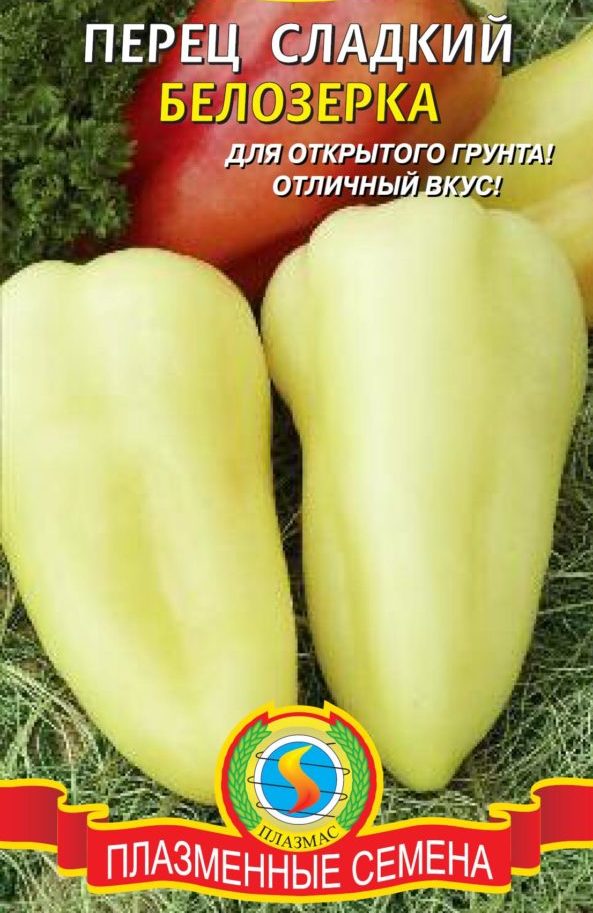
Ivanhoe
A relatively young variety, bred in Africa at the end of the twentieth century, but already listed in the State Register of the Russian Federation, as recommended for cultivation in greenhouse conditions. In open ground, it can grow only in the south.An early variety with fleshy walls and a wonderful aroma, which is removed in a characteristic cream shade 100 days after planting seedlings.
Peppers about 100-130 g, conical in shape, when fully ripe, turn bright red. The variety is used for industrial cultivation. It gives 80 centners per hectare.
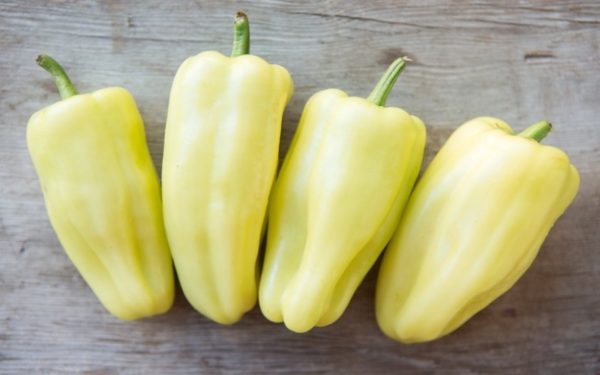
White bell
Dutch hybrid, white in technical bulk, yellowish-cream in a state of full ripening. Large-fruited, medium-yielding. He is whimsical in care, has a not very characteristic taste and smell, like most Dutch hybrids. Seed material must be acquired annually, seeds have already been processed from pests.
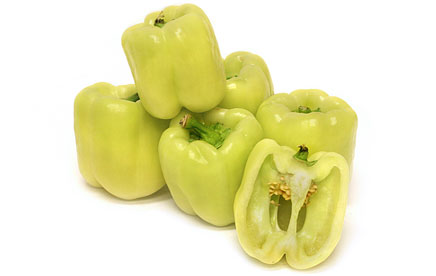
Century
A hybrid with fruits of conical shape, average weight 250-170 g, yellowish tint in the state of early filling, and orange-red, upon reaching final ripening. Hungarian variety, capable of bearing fruit for a long time, throughout the entire vegetative period, with a stable crop and high quality fruits. It can be grown in open ground or under a film, it is not afraid of either heat or poor watering.
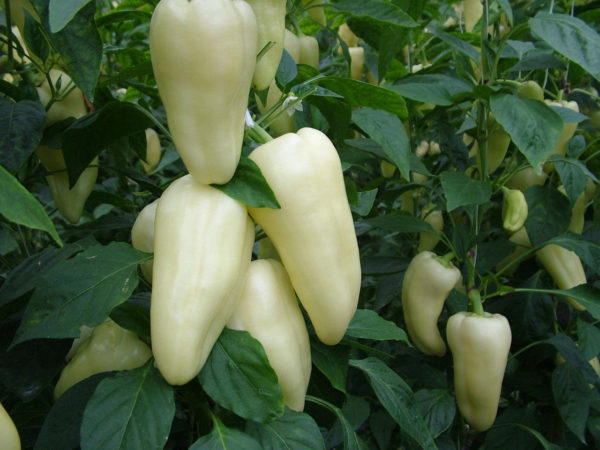
Rules for growing white pepper
The rules for growing white pepper are no different from the agricultural technology of other fruit nightshade with fruits in the form of pods, known collectively as sweet bell pepper. Given that some varieties of white pepper, by inertia, are included in the catalogs of plants by the color of the fruit in a state of full ripeness, it can be understood that there are no special requirements for breeding varieties.
All varieties of white pepper have long been known to experienced gardeners and have gained an excellent reputation. For a long time, the Star of the East has been successfully grown - an excellent fruitful hybrid from domestic breeders, which in some respects is not inferior to or even overlapping known varieties from Dutch breeders. White pepper, collected in a state of technical ripeness, has many useful properties that a buyer of varieties with an uncharacteristic color wants to get.
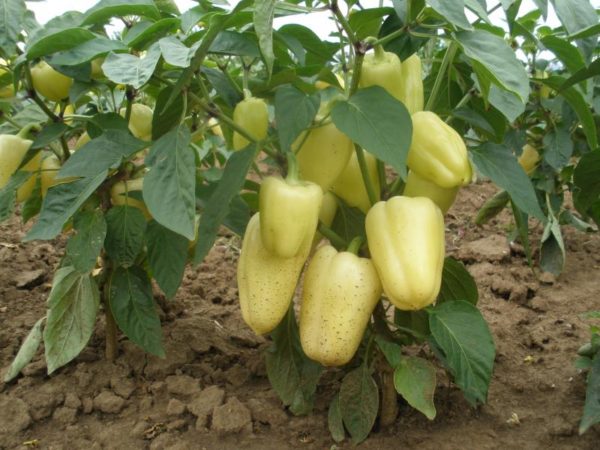
Fruits of white color, collected from pepper bushes, have, according to doctors, additional medicinal properties:
- these are strong immunostimulants that can increase a person’s natural immunity at a time when it is even simply weakened by a seasonal lack of vitamins;
- they optimize the digestive tract and accelerate the natural metabolism at the cellular level;
- have the ability to cleanse and thin the blood, preventing the formation of clots and blood clots;
- perform the work of natural anticoagulants and antioxidants due to the beneficial substances contained in them;
- accelerate the work of metabolic processes, help the removal of bad cholesterol and natural fat burning, contribute to the treatment of obesity and other endocrine pathologies.
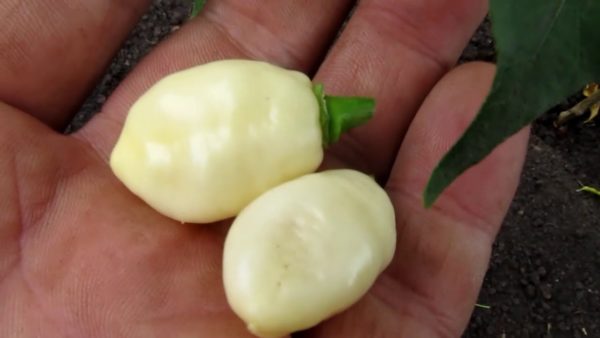
Reviews
Ivan Danilovich, 52 years old, Exactly:
“For a long time I have been cultivating Belozerka pepper. He is quite stable, he is not afraid of viral infections. Following the rules of planting, I always get a good harvest. I leave the distance between the rows - 60 cm, and between the plants - 35-40 cm.The whole family is happy, because the taste of pepper is amazing and it is very juicy. ”
Larisa Sergeevna, 67 years old. Kishinev:
“Every year I grow an early Century variety in a greenhouse. Usually I land on 1 square. meter 3-4 plants. The variety is very resistant to various stressful situations. It easily transfers transportation, which is very important for me. My husband and I sell it in a market where it is in great demand. ”




 Calorie pepper stuffed with meat and rice - BZHU per 100 grams
Calorie pepper stuffed with meat and rice - BZHU per 100 grams Gorky pepper - the best varieties for open ground
Gorky pepper - the best varieties for open ground Hot pepper seeds - the best varieties for open ground and reviews
Hot pepper seeds - the best varieties for open ground and reviews Capsicum tincture for hair - how to use and reviews
Capsicum tincture for hair - how to use and reviews